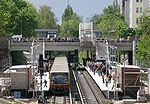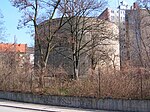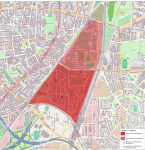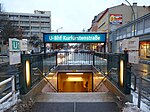Alter St.-Matthäus-Kirchhof

Alter St.-Matthäus-Kirchhof (Alter Sankt-Matthäus-Kirchhof or Old St. Matthew's Churchyard) is a cemetery in Schöneberg, Berlin, Germany. It was established in 1856 by the Protestant parish of St. Matthew. It is known for its interment of the Brothers Grimm, Jacob and Wilhelm Grimm, folklore tellers of "Cinderella" ("Aschenputtel"), "The Frog Prince" ("Der Froschkönig"), "Hansel and Gretel" ("Hänsel und Gretel"), "Rapunzel", "Rumpelstiltskin" ("Rumpelstilzchen"), and "Snow White" ("Schneewittchen"); Rudolf Virchow, variously known as "father of modern pathology", "father of modern medicine" or "father of social medicine"; Talat Pasha, and Claus von Stauffenberg, a German Army officer who almost assassinated Adolf Hitler. As for Stauffenberg, his corpse was exhumed by the SS on 22 July 1944, the day after his burial, and cremated to remove any traces of him. His tombstone, however, remains intact.
Excerpt from the Wikipedia article Alter St.-Matthäus-Kirchhof (License: CC BY-SA 3.0, Authors, Images).Alter St.-Matthäus-Kirchhof
Großgörschenstraße, Berlin Schöneberg
Geographical coordinates (GPS) Address Nearby Places Show on map
Geographical coordinates (GPS)
| Latitude | Longitude |
|---|---|
| N 52.4903 ° | E 13.3669 ° |
Address
Herpich/Linz
Großgörschenstraße
10829 Berlin, Schöneberg
Germany
Open on Google Maps









